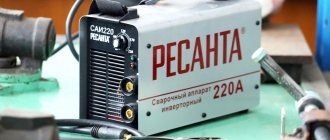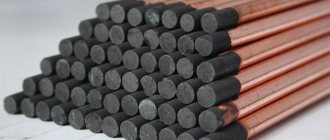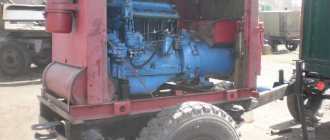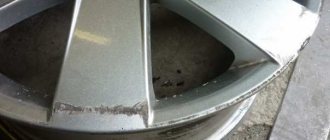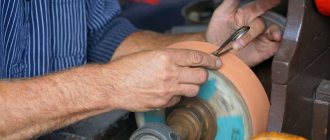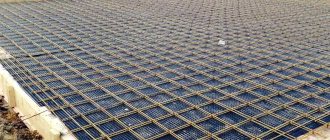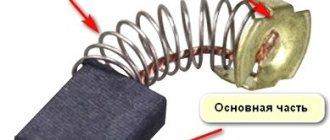- Prerequisites, history of creation, general description and applicability table of devices
- Scheme, device and design of a bag filter
- Clean and dirty cameras
- Principle of operation
- Sleeve regeneration: methods, pros and cons
- Mechanical vibration shaking
- Pulse purge
- Specifications
- Calculation, production, delivery and commissioning of dust collectors in Russia and abroad
The plant for the production of air-cleaning and gas-cleaning devices LLC "PZGO" welcomes everyone who wants to deepen their knowledge about the principles of operation, design, design and characteristics of this type of dust collectors like a bag filter .
For more than three decades, we have been professionally manufacturing and implementing pulse bag dust collectors, which today serve without complaints at more than 200 industrial enterprises in Russia, Asia and Europe.
Request an extended consultation or ask a question
Bag air filters for air purification from dust
To clean dust and gas mixtures, you should use a bag filter.
This is a “dry” dust collection device that has a high degree of reliability and excellent processing quality. No supply, be it wet cleaning or electrostatic precipitators, can compare with a bag filter, because it is equipped with filtering devices, they can be used at high temperatures, because they are made of polyamide and polytetrafluoroethylene. The bag filter is a versatile piece of equipment because it can, in fact, be used in different technological processes. However, it will be equally effective. You don't have to constantly monitor its operation because it functions continuously.
If you need a bag filter of a certain size and with certain design features that are suitable specifically for your operating conditions, then you can order such a device, because such devices can be made according to individual wishes. Most importantly, you need to indicate which dust-forming composition is primarily to be cleaned. Manufacturers, based on this, will select the right material for you to make a bag filter.
Where is a bag filter usually used:
1. In the manufacture of building materials. 2. In the field of non-ferrous and ferrous metallurgy. 3. During the foundry process. 4. In the process of automobile manufacturing. 5. In the energy and mining, furniture, glass and chemical industries. 6. In food production. 7. When processing metal.
Important Factors in Baghouse Operation
When choosing this filter, you need to consider several main points, which include items such as:
· temperature data of dew point with degree of moisture; · pressure and temperature data; · quality of gases, their explosiveness and volumes of the environment that must be purified; · density of dust and its type; How does this stage occur? · toxicity of dust composition substances.
In order to calculate a bag filter, it is necessary to first establish the quantity of purge gas with dusty compounds that fall on the material, and then take into account the speed at which the filtration process occurs with the fabric, and it was chosen for the manufacture of the bag filter. How to use a bag filter?
How to select sleeves for production
The hose fabric plays an important role in the dust filtration process, so it must be selected in accordance with the results of the dust test.
When choosing a fabric, you should consider several technical characteristics:
History of the creation of bag filters
As we know, people have been struggling with dust and dirt for quite some time. At the dawn of civilization, they noticed that woven materials perfectly retain such sludge. So, Bedouins, miners, camel drivers, even American cowboys wrapped their faces in cloth; everyone who worked or lived in dusty places used cloth face masks as protection.
With the development of industry, the amount of dust waste increased. Multiple technologies have been developed with aspiration as the goal.
The first bag filter was the “Hippocrates Sleeve”. It was a network of fixed cotton bags for mechanical purification of impurities from water.
Modern bag filters are perhaps one of the most effective air filtration systems for dust in production, because they clean dust particles down to 0.5 microns with a purification rate of up to 99%.
Labor protection conditions and environmental standards currently require the mandatory installation of bag filters in production. They need to be selected depending on the temperature and composition of the dust.
Device and circuit
The design of bag filters and their technical characteristics differ slightly between different manufacturers. The main blocks and schematic diagram of the design consists of the following elements:
- Dirty gas chamber
- Clean gas chamber
- Bag filter housing
- Mounting plate (dividing plate between clean and dirty chamber)
- Filter bags
- Regeneration system with receivers, pneumatic valves, purge pipes
- Hopper with a device for unloading collected dust and supports
- Automatic control system
The filter configuration differs depending on operating conditions and can be supplemented with service platforms, an automatic bunker unloading system, a pneumatic or vibration system for bunker collapse, and an emergency mixture of outside air to reduce the temperature. If the equipment is located outdoors, in order to avoid the formation of condensation on the housing, the filter is equipped with heating of the pneumatic valves and hopper, as well as thermal insulation.
To filter explosive dust, for example, in the production of flour, cement, coal plants, filters are manufactured in an explosion-proof design. The explosion-proof design of the bag filter involves the use of filter bags with an antistatic coating, which prevents the formation of a static charge on the surface of the filter material. Explosion membranes are also installed on the filter housing, which release excess pressure in the event of an explosion.
The filter material of the bags is selected based on the characteristics of the medium being filtered, the properties and dispersion of dust. The main materials used in bag filters are polyester (PE), meta-aramid (AR), polyimide (P84), fiberglass (FG), polytetrafluoroethylene (PTFE), polyacrylonitrile (PAN), polyphenylene sulfide (PPS) and others.
Equipment configuration
Manufacturers, as a rule, include a filtration channel as standard equipment. In addition, the device is equipped with a special receiver that regulates the intensity of the compressed air supply, as well as a controller and pneumatic valves. As for additional devices, these include codification kits for use in high-temperature conditions, as well as accessories that increase the explosion protection of the installation. Dust collection equipment can also be equipped with pneumatic valve heaters, fans, etc.
Areas of application and operating features
A wide range of industries are experiencing the need to constantly clean the air from a large number of small particles of materials and products. Therefore, bag filter systems are common:
- in the chemical and food industries;
- at mining and processing enterprises;
- in foundries, in metallurgy, in workshops where cast iron is processed using shot-blasting machines;
- at flour mills, elevators and other enterprises where processing and storage of raw materials remains a source of dust;
- in production areas and paint shops.
Depending on the requirements for air purity and the characteristics of technological processes, bag filters can be equipped with sleeves made of different materials - these are natural and synthetic woven and non-woven fabrics rolled into sleeves. The efficiency of air purification from certain types of contaminants can be increased by using porous materials or fabrics with emitted fibers, flannelette and its synthetic analogues.
The design of the sleeve allows it to be attached in different ways: on a ring with a fabric fold, on spring elements, on clamps. As a rule, the service life of one hose is several years. In the absence of aggressive contaminants in the air that destroy the structure of the fabric, the regeneration system fully copes with its task and maintains the throughput of the hoses throughout the entire operating cycle.
The need for air purification in production
The environmental crisis on the planet is getting worse every day. Manufacturing enterprises play an important role in this: leakage of chemicals, pollution of water bodies with wastewater and dust emissions have an extremely negative impact on both the state of nature and human health.
In addition to direct harm to workers and residents living near production, dust also causes damage to the enterprise itself. Dust deposits have a detrimental effect on the operation of equipment and worsen the condition of the ventilation system and heat exchangers. These factors can lead to a decrease in the quality of manufactured products and even increase their cost due to breakdowns and faster wear of the equipment used.
Dust suppression at enterprises is organized using different methods. In addition to trapping suspended matter with special filters, a fogging system can be used, thanks to which dirt particles settle together with microdroplets of water
That is why high-quality dust collection and neutralization is an integral stage of the entire technological process in production. The bag filter effectively copes with the assigned tasks and protects not only nature and people, but also the equipment of the enterprise.
Regeneration system
As the accumulation of polluting particles increases, the throughput, productivity and efficiency of the bag filter decreases, and the resistance to air movement of the filter material increases. To prevent them, they resort to regular cleaning of the filter channels. Several schemes have been developed and successfully applied in practice:
- aerodynamic shaking or recovery using pulsed or return blowing of the bag filter with compressed air;
- automatic vibration shaking;
- combination of methods.
You can set the cleaning mode using a timer that sends a signal after a specified period of time. Another method is carried out through the readings of a sensor that records a significant drop in pressure and productivity. For vibration they use: sound waves, mechanical shaking. Using installed vibrators with an impact frequency of about 15...25 Hz, the contamination is dropped into the receiving hopper.
The backflushing scheme of the bag filter consists of intensive exposure to clean air. With pulse blowing, small portions of compressed air are released intermittently (pulses). This creates vibration in the sleeve. Pulse duration - 0.1...2 seconds. The frequency depends on the nature of the change in the resistance of the bag filter. Self-cleaning occurs. With this method, the humidity of the compressed air is of great importance. Before serving, it must be dried in a special installation. With the combined method, several types of regeneration are used.
After a certain period of time and number of regenerations, the stuck amount of dirt in the filter material stabilizes, which corresponds to the residual resistance of the material. This value depends on a number of aspiration indicators: filter fabric, parameters and properties of polluting particles, moisture content of gases, regeneration methods.
The photo shows such pulse-action installations. The advantage of aerodynamic regeneration over mechanical regeneration is that during regeneration the operation of the gas bag filter does not have to be stopped. This allows you to work around the clock, and the dust concentration can reach up to 55 g/m3.
To unload accumulated contaminants, several methods are used. The most productive purifiers include pneumatic transport, which is installed for several bunkers at once. Its operation does not require stopping the bag filters. It runs on its own fan. Unloading occurs through a sluice reloader, the operation of which does not violate the tightness of the device. Other methods require stopping the operation of the filtration system and have the inconvenience of possible freezing of waste accumulated in the bunker.
The bag filter is replaced due to the loss of its filtering properties, which in many cases occurs once every 3 years. When working in a slightly aggressive environment with a low concentration of contaminants, the operating period can reach up to 6-7 years.
Principle of operation
The operating principle of bag filters is based on the passage of dirty air through the pores of a non-woven filter material. Dusty air enters the dirty gas chamber through the flue through the inlet pipe and passes through the surface of the filter bags. The dust settles on the filter material, and the purified air enters the clean gas chamber and is then removed from the filter. As dust accumulates on the surface of the filter material, resistance to air movement increases and the throughput of the filter bags decreases. To clean the bags from captured dust, they are regenerated with compressed air or vibration shaking, depending on the method of bag filter regeneration. The dust thrown from the hoses enters the storage hopper and is removed through the unloading device. Read more about pulse blowing of bag filters.
Pulse regeneration of filters is carried out with pre-prepared compressed air of class 9 according to GOST 17433-80 with a pressure of 4 to 8 Bar. Compressed air consumption is individual for each filter and is reflected in the technical specifications. Regeneration of the hoses occurs automatically according to a timer or a pressure drop signal (using a differential pressure gauge), without stopping the operation of the filter.
Operating principle of a bag filter
This is a relatively simple design. It can be part of any internal ventilation that cleans dusty air and returns it to the room. Or an autonomous system for complete cleaning before discharge to the outside.
How does a bag filter work?
The diagram and operating principle of the bag filter are presented above. The device is designed to pass a significant volume of contaminated gases or air. The air flow first enters the cyclone, where the large fraction settles. Then it moves through the inlet valve into the system. There, dust or soot particles are retained on the plane of the filter made of woven or non-woven base.
The bag filter can be a single design. But batteries are considered more efficient. The air then exits through the outlet valve, which is equipped with an automatic outlet pressure control system. The degree of purification of the bag filter depends on various factors and reaches 90-99.9%.
Thus, the use of this design allows you to perform the following tasks:
- high-quality purification of the air mixture from contaminants;
- regulation of the quantity and pressure of purified air coming out;
- creating a uniform dust filling.
Harmful airborne particles are retained by the hose design and removed by mechanical shaking during the regeneration process.
Conclusions and useful video on the topic
The structure and operating principle of a cleaning system with a bag filter is clearly shown in the video below:
The hose testing process and the filter cleaning mechanism are demonstrated by the manufacturer of the cleaning equipment:
A bag filter is one of the simplest and most effective ways of dry air purification from dust of various origins. The universal system can be successfully integrated into almost any technological process during which large volumes of filtration medium are formed, requiring maximum removal of unwanted suspended matter. The hoses are quite easy to replace and do not require complex or expensive maintenance. Therefore, owners of production facilities should definitely take a closer look at this type of exhaust air purification.
Would you like to supplement the above material with useful information or talk about the features of using filters based on personal experience? Write your comments and additions, ask questions to our experts - the feedback block is located below.
Purification method using devices using photocatalysts
The following devices work similarly to HEPA filters, that is, cleaning includes several stages. They completely destroy harmful impurities, and even microorganisms found in air masses. Such devices are equipped with a catalyst, an ultraviolet lamp, and are sometimes supplemented with an ion-generating device, filters using activated carbon or metal plates that operate on the basis of an electrostatic field. Such devices are the most effective among air purification devices. In addition, they are environmentally friendly, safe to use, economical and easy to maintain.
Devices equipped with a photocatalyst completely destroy any impurities in the air
Problems solved by air aspiration
- The required sanitary conditions are provided so that working employees can stay indoors without harm to their health.
- Optimal conditions are created for carrying out all required technological processes.
- Remains of dust, toxic and flammable compounds, and explosive impurities that can be released at various production stages are removed from the air masses.
Aspiration air systems and self-cleaning filters are high-tech designs of ventilation equipment. They are designed to absorb air where chemical volatile gases, dust, smoke and so on are generated. These systems make it possible to remove small particles of foreign origin, wood dust and shavings, and abrasive dust from the airspace and avoid the spread of dust throughout the room.
Operating principle of bag filters
Air purification occurs in several stages:
Stage No. 1
Due to the vacuum created by the fan, the dust-air mixture enters the filter housing, which consists of “dirty” and “clean” chambers. The gas to be purified passes through a “dirty” chamber, inside of which there are filter elements (filter sleeves stretched over a frame mesh), on which the filtration process takes place. Passing through filter bags made of polyester filter fabric, dust is retained on them. The purified gas leaves the filter through the outlet flange. Dust lingers on the sleeves and falls down.
Stage No. 2
When a layer of dust grows on the surface of the filter cloth, the regeneration system is activated, which shakes the filter bags with a pulse of compressed air from the inside. The regeneration system ensures timely cleaning of the bags from dust and maintains the nominal gas permeability of the filter elements and is activated when the hydraulic resistance between the “dirty” and “clean” cavities of the filter housing increases. When a certain resistance value is reached, the hoses are shaken by a pulse of compressed air from the inside. The dust is poured into the arm hopper.
Stage No. 3
The hopper is unloaded using a sluice gate (together with a screw), which ensures the necessary tightness of the filter when unloading dust. Unloading dust from the hopper should be done regularly as dust accumulates in the hopper. Dust accumulation in the bunker is not allowed to exceed half of its volume. Depending on the filter configuration: a limit switch for the filling level of bulk materials is installed on the hopper body; A sluice feeder is installed at the outlet of the bunker. All dust unloading controls are located in the dust unloading control cabinet.
own production - 50% cheaper than analogues
We offer bag filters for purifying air from dust and gases in factories and enterprises. Such a filter is used to purify air in an enterprise where the enterprise is a direct source of environmental pollution by emitting polluted air into the atmosphere. Bag filters help preserve the environment and the health of employees.
Patents and declarations of conformity for bullet traps
A bag filter is a device designed to clean dusty air, namely industrial emissions (without aggressive dust) generated during the processing of various products. They also have the ability to release purified air.
Functions and purpose
During production at enterprises, the air is constantly polluted by particles of processed materials. Even if the workshop has good ventilation, it is still impossible to completely clean the room unless you use specialized equipment, for example, an industrial filter. The main tasks of such installations include ridding the environment of technical impurities and dust particles.
Some models can also perform gas cleaning. In simple terms, they remove smoke, fumes and industrial gases from the air. They also support the function of deep preparation of ambient air. That is, they can disinfect and disinfect the environment and even regulate microclimatic characteristics.
The regeneration system can be of two types:
- standard - gas purification and regeneration are carried out simultaneously;
- mode designed for difficult operating conditions. It is performed when one or another section of operating equipment is turned off.
Operation in difficult conditions
The bag filter, the characteristics of which are selected in accordance with the conditions of use, is suitable for outdoor and indoor work. The first option requires addition in the form of the following components:
- thermal insulation of the body part, which is of particular importance during vapor condensation;
- heating of equipment bunkers and regeneration systems;
- special shelter that prevents exposure to atmospheric phenomena.
Among the main types of devices, it is worth noting a two-row design, in the middle part of which there are nozzles for the entry of contaminated and purified gas, as well as a single-row one, in which the nozzles are located on the side of the structure.
Transportation of equipment is carried out by freight transport. To simplify this process, the bag filter, the drawing of which is presented above, is sold in partially disassembled form. The units are manufactured in various variations in accordance with operating conditions. To assemble the structure, the welding method and bolted connections are used. Most devices are designed to operate under excessive vacuum or pressure.
View gallery
What is the latest trend in coarse filtration?
This is the development of coarse filtration after elutriation. The reason is clear. Send more or less pure juice for fermentation. It can be cleaned as much as the winemaker wants. But you need to understand that you cannot filter the juice to the highest purity and think that it will be the best wine, but not even vice versa, leave as much impurity as possible and there will be the best wine. The truth is somewhere in the middle. Everything will be inflated depending on the winemaker’s intentions. He must know when, what and how to filter. This is a complex topic, especially in juices, at the leading wineries that deal with this, that some juices are filtered significantly to the highest purity, some not much, on the contrary, some even undergo a blending, during which part of the sludge, after a thoughtful discussion by the technologist, is returned to the filtered juice to achieve the correct level of sludge content for the future development of the wine during or after fermentation.
Frantisek Bilek
Filtration specialist and director of Bílek Filtry LLC
The article was published in the magazine “Vinař Sadař” (winemaker-gardener).
Main types of filter bags
The selection of a suitable bag filter is based on the production process and the nature of the dust produced in the process. The main criteria that you should rely on when selecting this equipment are the performance of the installation and the depth of purification of the incoming air.
The remaining parameters are individual: the degree of their importance depends on the production conditions
For example, the choice of material from which the filter is made depends entirely on the characteristics of dust pollutants that arise during production.
No. 1: Difference in hardware performance
Bag filters are divided into two main types: round and flat. The first type is designed for operation in enterprises with a large dust load and is capable of passing and purifying quite significant volumes of air: more than 100 thousand m 3 per hour.
Flat hoses have a more modest performance, but also have a more compact design. Such cleaning systems are suitable for workshops with a small dust load.
No. 2: Classification by type of hose installation
Depending on the type of installation, systems with bag filters can be vertical or horizontal. The latter remain more efficient as they allow more air or gas to pass through.
The flow path through the hose itself is quite long, so the pores of the filter material trap more pollutants.
Sleeves are also distinguished by shape: ellipsoidal, cylindrical, rectangular.
No. 3: Varieties based on material of manufacture
The classification and operating principle of a bag filter is also influenced by the material from which the filter element is made. It is often made from fabric.
It can be either natural cotton or wool, or synthetic materials:
- polyester;
- fiberglass;
- polyamide;
- meta-aramid;
- polytetrafluoroethylene;
- polyacrylonitrile, etc.
The choice of hose material is based on the type of production, characteristics of the filtered mixture, dispersion and properties of dust, and aggressiveness of the environment.
Recently, non-woven filters with a more uniform and finely porous structure, which, due to their fibrous surface, retain more pollutants, have become particularly popular.
No. 4: Classification by regeneration method
The filter restoration method can be done with
Advantages and disadvantages of devices
Like any other cleaning equipment and systems, for example, aspiration, a bag filter has its own operating characteristics, during which the characteristic advantages and disadvantages of the system are revealed.
The advantages of such a complex outweigh the disadvantages, which is why bag filters are widely used in various areas of production.
The installation of a ventilation system with a bag filter is suitable not only for large-scale and complex production, for example, in the metallurgical industry. A similar air filtration system is also appropriate in small workshops for the production of furniture, paving slabs and other things.
The undeniable advantages of bag filters include the following features:
- The design is universal, so it can be easily integrated into the ventilation and cleaning systems of various industrial sectors.
- The complex with a bag filter can be easily integrated into a technological line and is undemanding in terms of the amount of space required for its installation.
- The degree of purification of the gas-air mixture reaches 90-99%, which is an extremely high indicator for a dry cleaning system.
- Filtration occurs equally effectively both at extremely low air temperatures and in a heated room.
- Control of the complex is very simple and can be fully automated.
- Planned replacement of spent bag filters is carried out every two to three years.
In addition to the advantages, the bag filter also has minor disadvantages. The main one is the need to supply compressed air in conditions of filtering air volumes of more than 150 m3 per hour.
Certain types of production or aggressive operating conditions may require filters made from expensive materials, such as fiberglass or meta-aramid, which are more resistant to wear.
Other types of filters are also used in the ventilation system. We talked in more detail about air and carbon filtration systems in the following material.
Bag filters with pulse blowing
The simple design of bag filters and their efficient operation have made this type of filter mechanism the most common in industry. Moreover, such filters have an internal classification that characterizes the type of material used and the characteristics of the gas supply.
The design of bag filters is such that it allows gas filtration into several streams at once. The space between the sleeves ensures free inflation of the sleeves under the influence of air flow and ease of replacement or repair.
Bag filter with pulse blowing
The design of filter bags can be different. They are usually made in the form of a fabric (one-piece or consisting of parts) cylinder with or without spacer sleeves. The upper and lower edges of the sleeves, in those places where the fastening occurs with a clamp, are folded and hemmed to give them greater strength.
Filters that are used to purify gases from dust are most often made in the form of several bag filters, which are connected in parallel to batteries. In this case, filtering occurs alternately in three blocks, which are located one after another.
Two of these blocks perform their own filtration, and the third one performs sediment discharge.
Bag filter battery
During the filtration process, gas that is contaminated with dust is directed into the filter bags. Dust particles from the gas remain on the sleeve and form sediment.
At the moment when the sediment reaches its maximum thickness, gas stops flowing into the apparatus. After this, air is blown into the filter sleeve in the opposite direction. And thanks to vibration, the sediment falls away from the filter sleeve. The sediment falls down and falls into the cone, and from it is discharged into bags.
In order to completely clean the filter bags, it is switched to dust removal mode.
To efficiently clean a continuous flow of gas from dust particles, you should use a battery of three hoses, which operate in turn. Two of the filters are constantly running, and the third is a backup and is shaken out while the first two are running.
As with the separation of suspensions, purification of gases from suspended particles by filtration is used in cases where separation cannot be carried out by sedimentation in cyclones and settling chambers. The operating principle of devices for purifying gases by filtration is similar to the operation of devices for separating suspensions. Such devices use porous partitions that allow gas to pass through, but retain solid particles on their surface.


